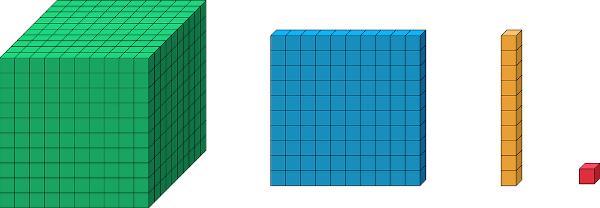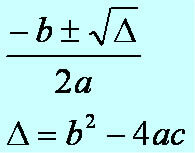Our numbering system, which is known as decimal numbering system, is based on the number of fingers we have in our hands. In this system, we use the powers of ten to write any number. Before performing any kind of mathematical operation or even communicating any numerical quantity, it is necessary to understand how we are going to refer to this number. See from now on how to represent a numerical quantity using our numbering system.
Read too:Scientific notation – learn to operate large numbers more simply
How is the decimal numbering system organized?
The decimal numbering system is organized from the junction of Indo-Arabic numerals. With them, you can write any number to represent any numerical quantity. Are they:
1 – 2 – 3 – 4 – 5 – 6 – 7 – 8 – 9 |
Each of these digits represents a certain quantity. These quantities are called units.

One of the main features of this system is that, every 10 units, we formed 1 ten (10 units); every 10 tens, we form 1 hundred (100 units); every 10 hundreds, we form 1
thousand unit (1,000 units). Whenever the digit 0 is added, we must multiply the order by 10.
Examples
1. Determine how many units, tens, hundreds, thousands units each of the following numbers have.
a) 504
Performing the decomposition of the number, we have:
504 → 500 + 0 + 4
- 5 hundreds (5 x 100) - Five hundred units
- 0 ten (0 x 10) - Zero unit
- 4 units
Do not stop now... There's more after the advertising ;)
b) 2,471
2.471 → 2000 + 400 + 70 + 1
- 2 thousand units (2 x 1000) - Two thousand units
- 4 Hundreds (4 x 100) - Four Hundred Units
- 7 tens (7 x 10) - Seventy units
- 1 unit
See too:Natural numbers - see what they are and their characteristics
Order and class in the decimal system
Given a number, each of its digits represents an order. We must always start the analysis from right to left.

To determine the class of a number, we must separate it from three to three digits. In general, it looks like this:
- Unit class: 1st order to 3rd order;
- thousands class: from 4th order to 6th order;
- million class: from 7th order to 9th order;
- thousands class: 10th order to 12th order and so on.
Understanding the order and class of a number helps us to better see the numerical quantity being worked on.
Example:
a) 12345
Let's separate the number 23431 every three orders, like this:
12. 345
See that the 345 belongs to the class of simple units, therefore this part will be read thus: three hundred and forty-five. already the number 12 belongs to the class of thousand units and so it will be read as twelve thousand. The number 23,431 reads: twelve thousand three hundred and forty-five.
solved exercises
question 1 – Write the number in full and break it down, determining its order and class.
a) The distance between the Moon and Earth, approximately 384400 kilometers.
Resolution:
Let's initially separate the orders of this number from three into three digits.
384.400
The number 400 belongs to the class of single units, the number 384 belongs to the class of hundreds of thousands. Therefore, this number reads like this:
Three hundred eighty four thousand four hundred
Decomposing this number, we have:
300.000 + 80.000 + 4.000 + 400 + 0 + 0
- 0 unit
- 0 ten
- 4 hundreds
- 4 thousand units
- 8 tens of thousands
- 3 hundred thousand
b) The population in Brazil, in the year 2017, was 209003000 people.
Resolution:
Separating by three digits, we have:
209.003.000
The digits 000 belong to the class of single units, the digits 003 to the class of thousand units and the digits 209 belong to the hundreds of millions class. So, let's read the number as follows:
Two hundred and nine million and three thousand
Breaking down the number, we have:
209.000.000 + 3.000
- 3 thousand units
- 209 hundreds of thousands
c) The radius of the Earth is 6371 kilometers.
Resolution:
In an analogous way to what was done before, let's separate it by three digits.
6.371
Note that 371 belongs to the simple hundreds class and 6 belongs to the thousand unit class. So, let's read this number like this:
Six thousand three hundred and seventy one
Now let's break down the number:
6.000 + 300 + 70 + 1
- 1 unit
- 7 dozens
- 3 hundreds
- 6 units of thousands
d) The radius of the sun, 696340 kilometers.
Separating the digits by three, we have:
696.340
The number 340 belongs to the simple hundreds class, while 696 belongs to the hundreds of thousands class. This number reads like this:
Six hundred and ninety-six thousand three hundred and forty
600.000 + 90.000 + 6.000 + 300 + 40 + 0
- 0 unit
- 4 dozens
- 3 hundreds
- 6 units of thousands
- 9 tens of thousands
- 6 hundred thousand
by Robson Luiz
Maths teacher
Would you like to reference this text in a school or academic work? Look:
LUIZ, Robson. "Decimal numbering system"; Brazil School. Available in: https://brasilescola.uol.com.br/matematica/sistema-de-numeracao-decimal.htm. Accessed on June 29, 2021.



